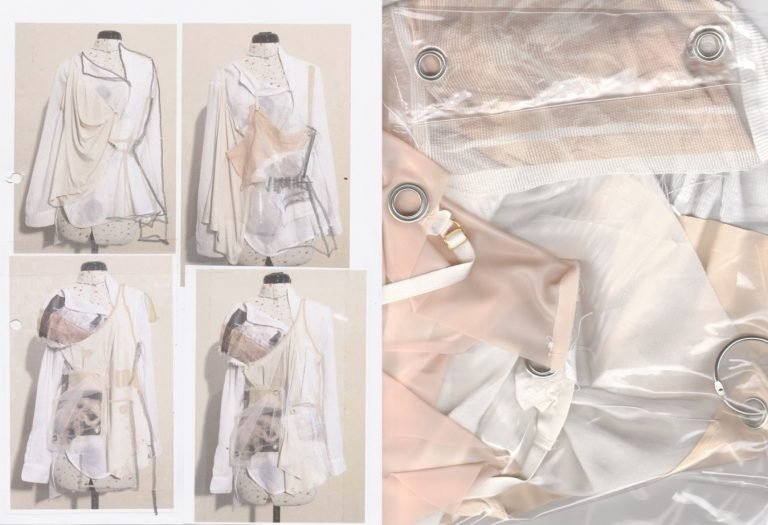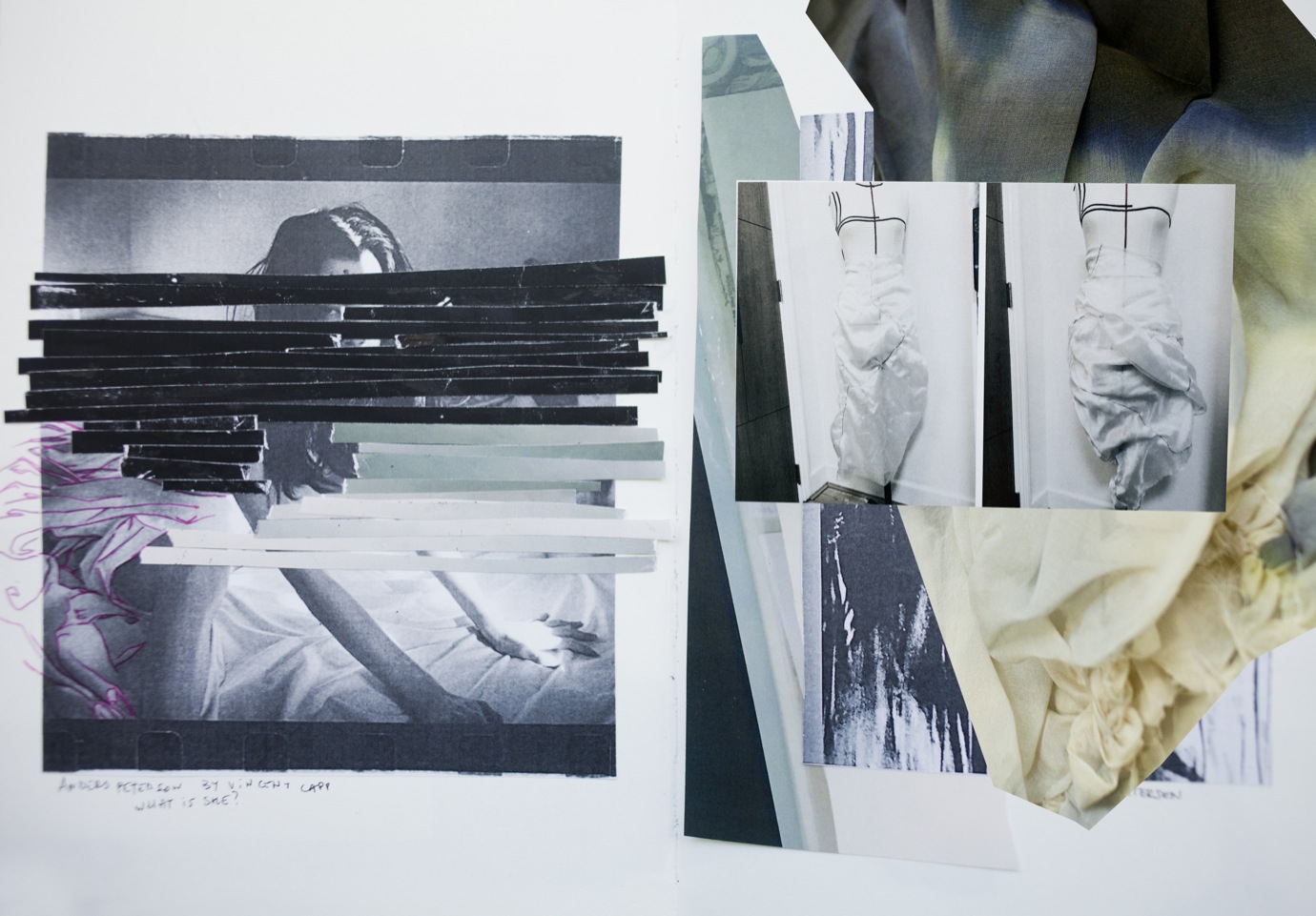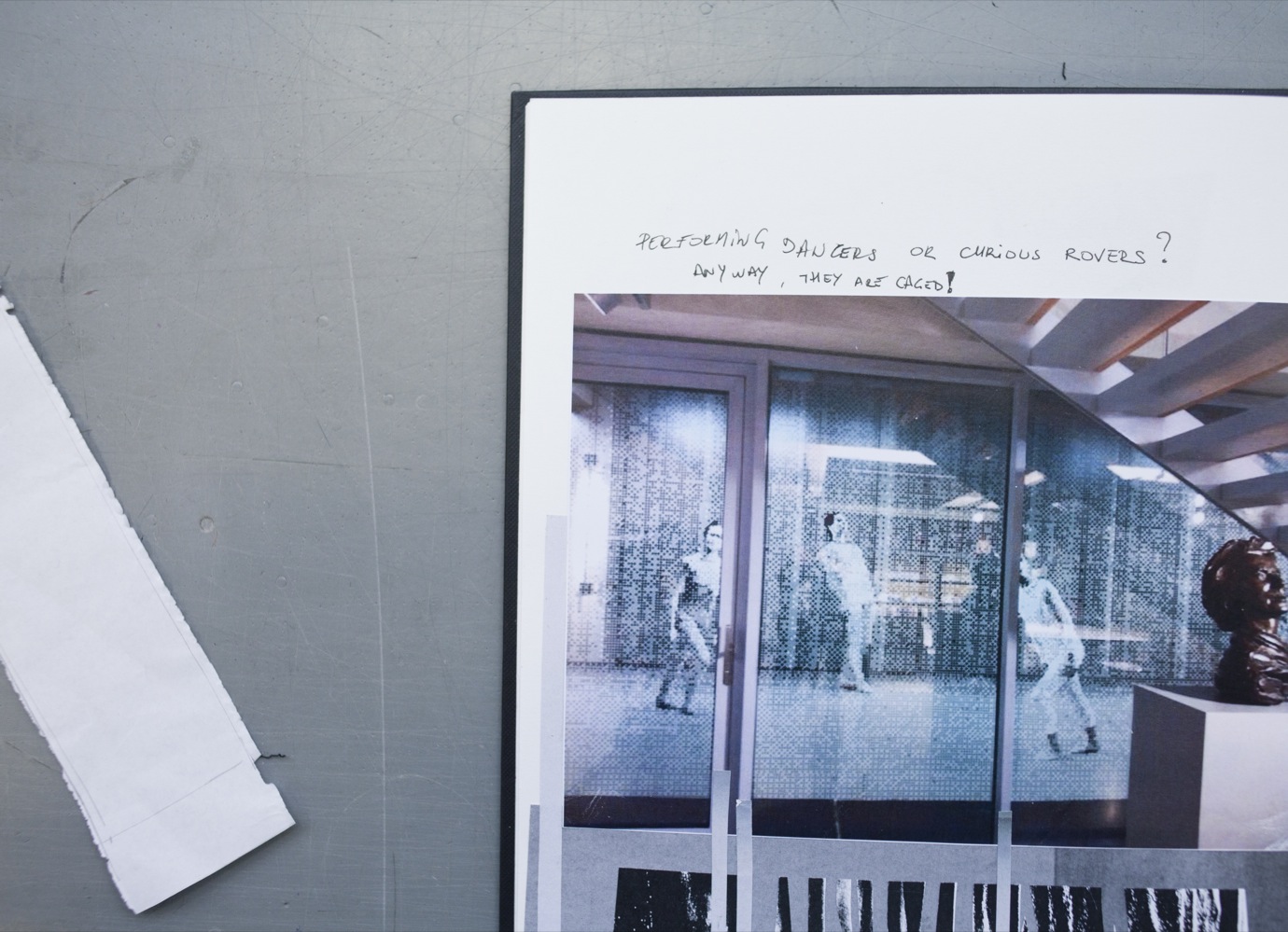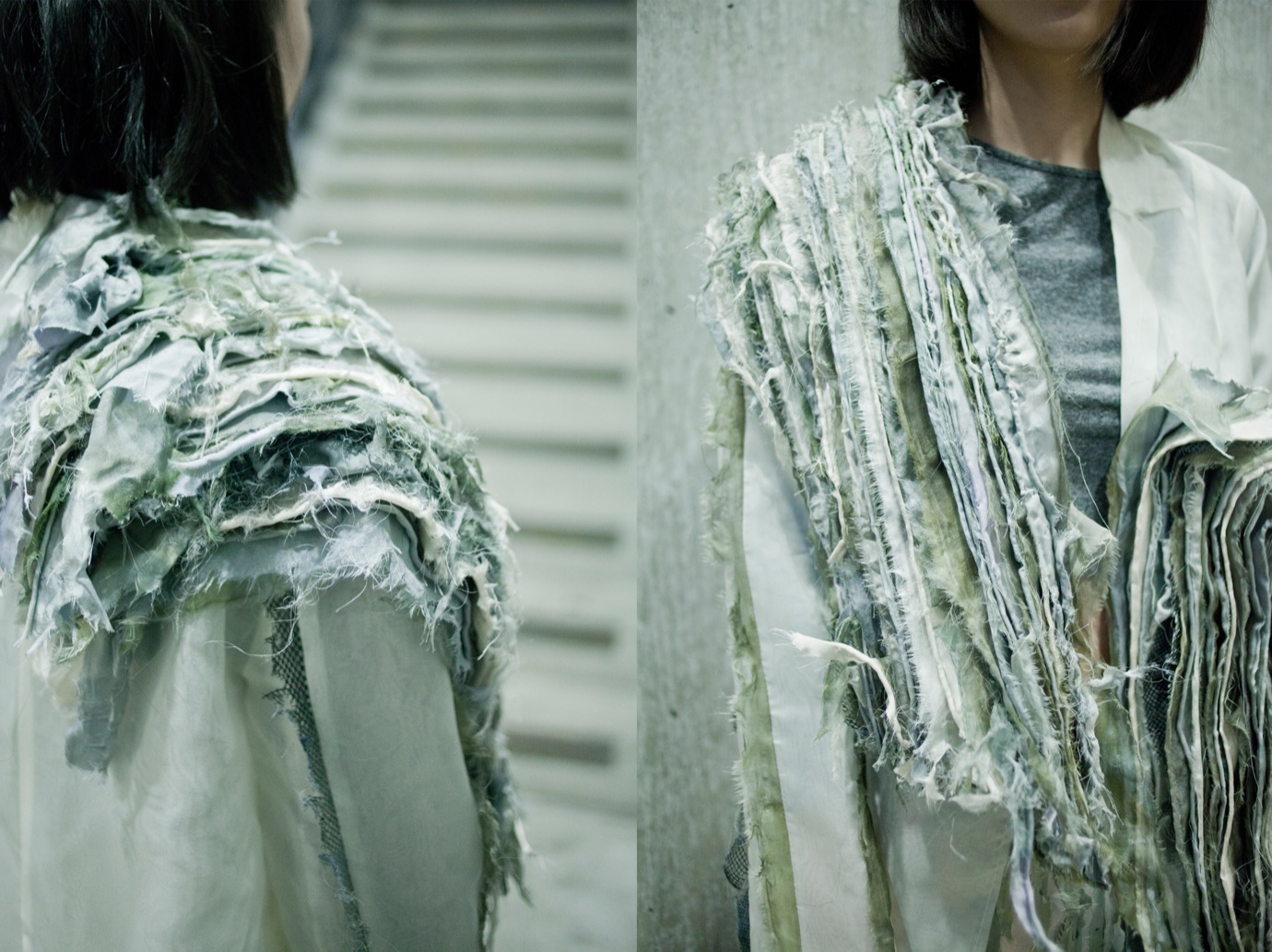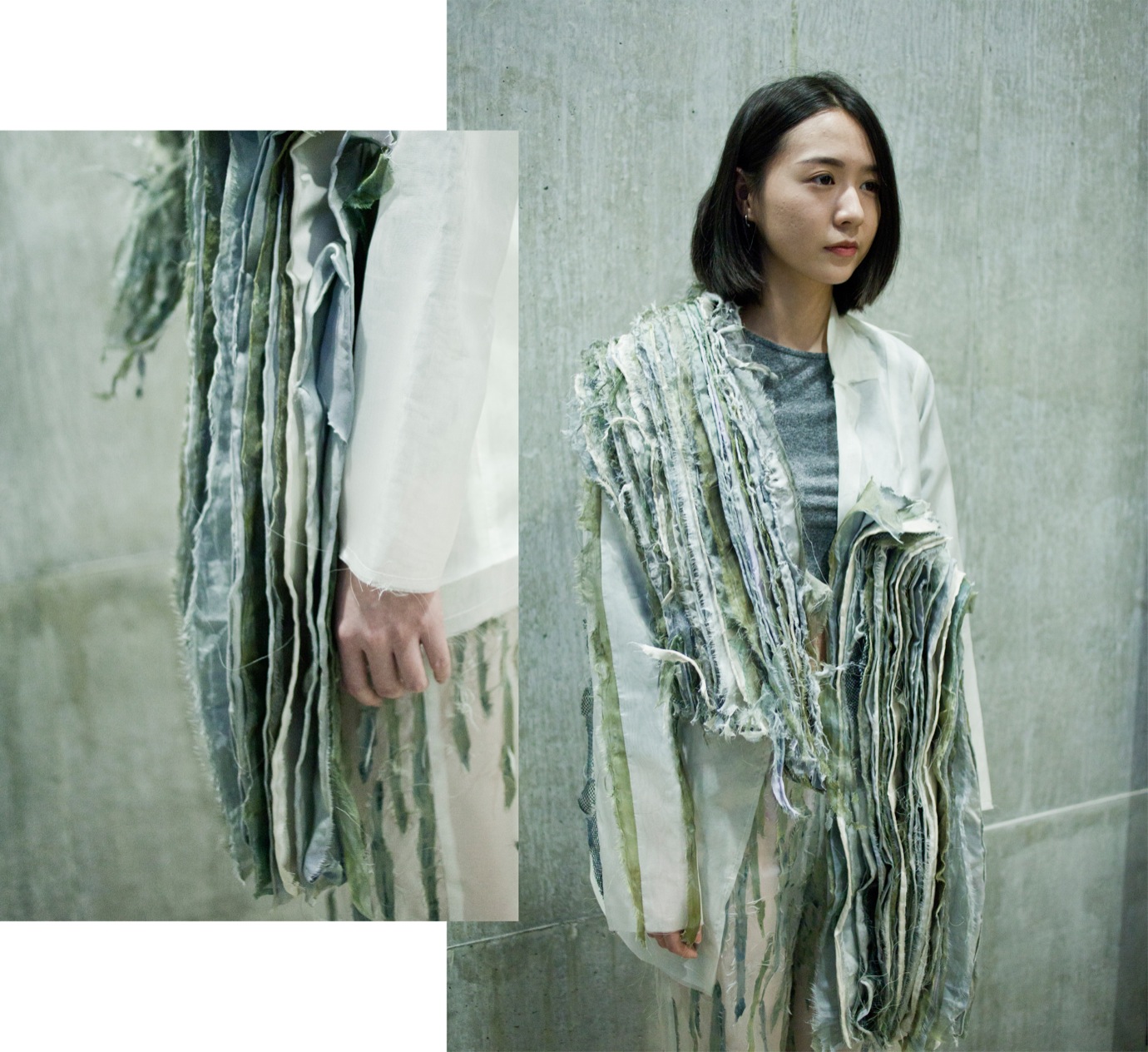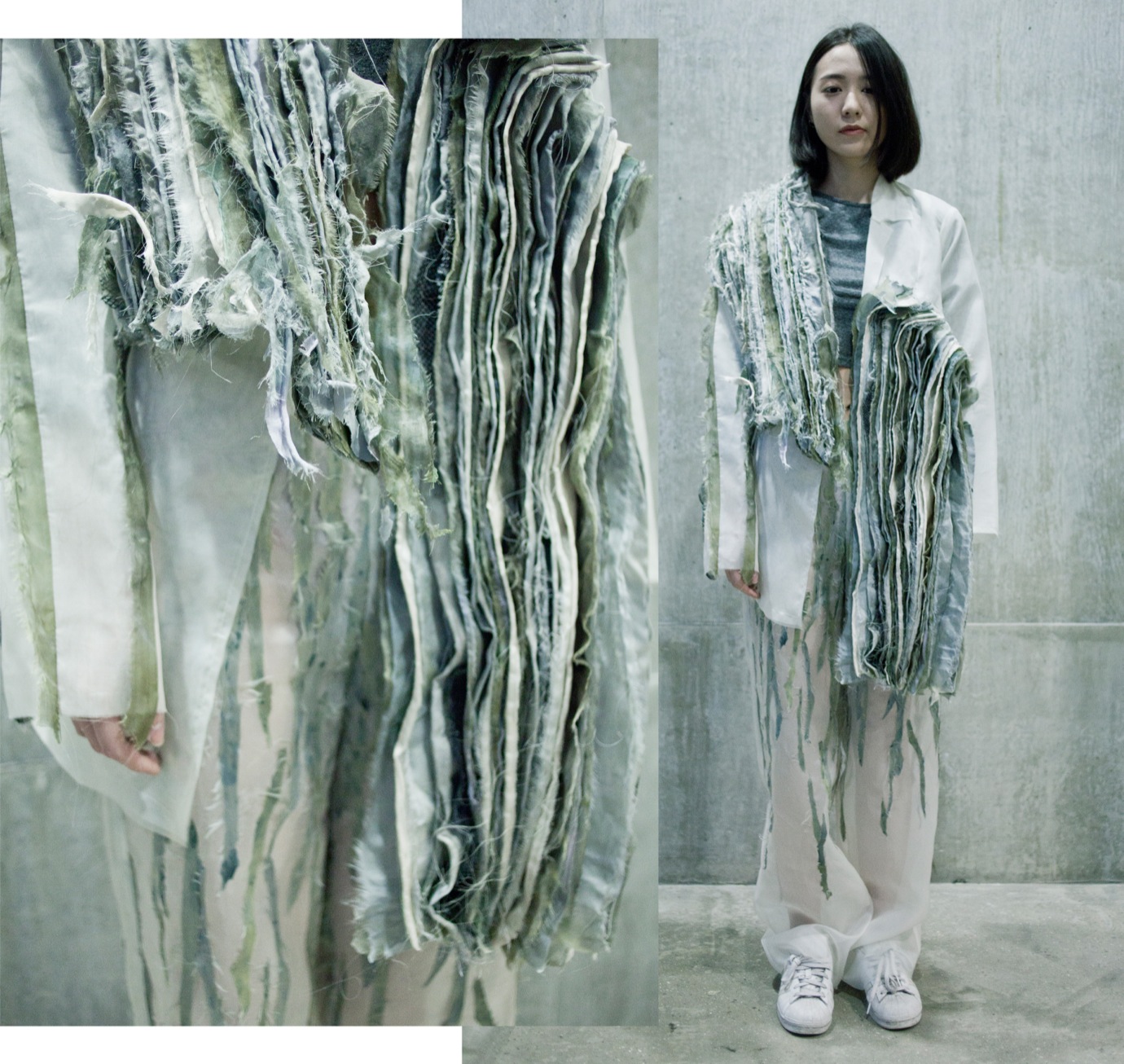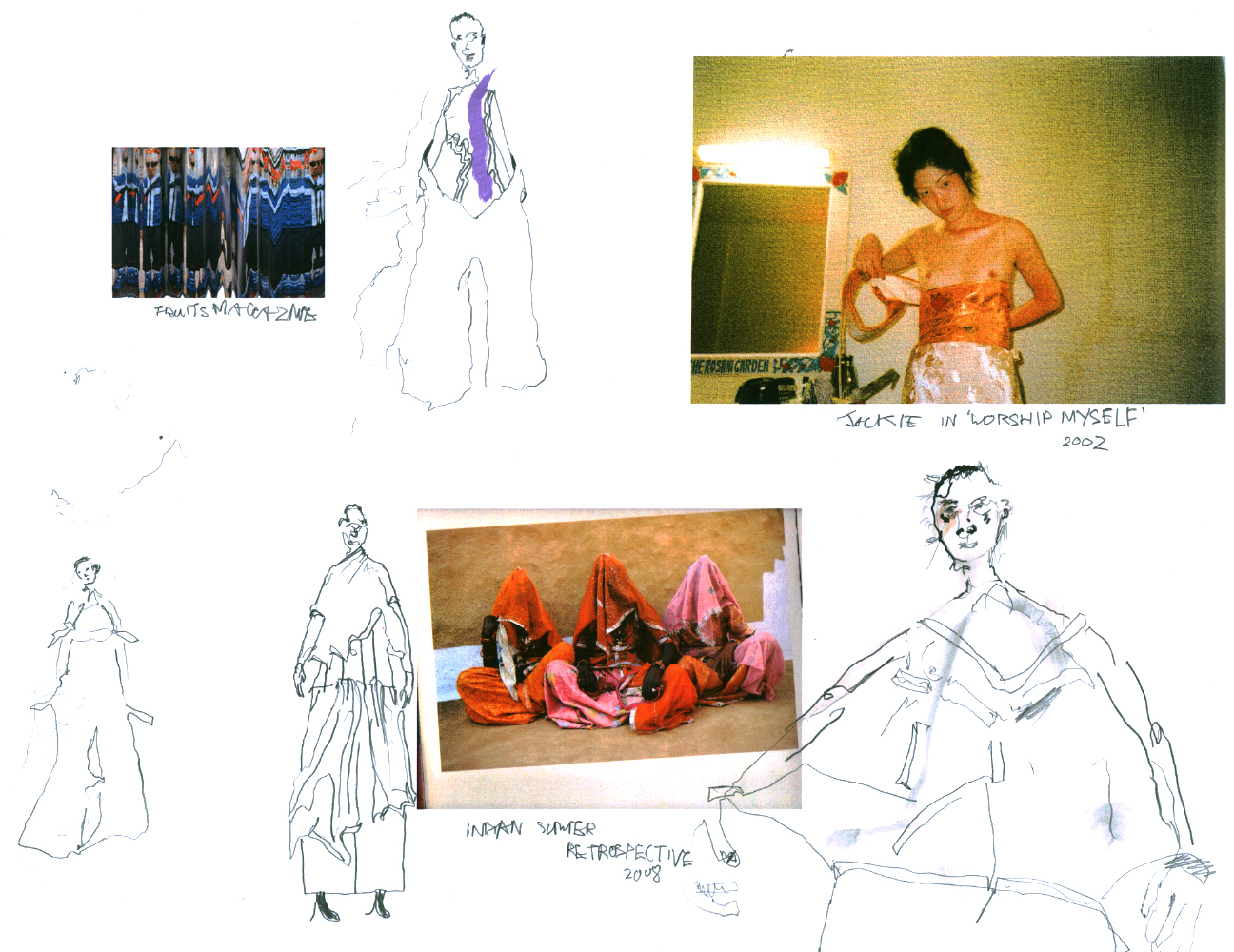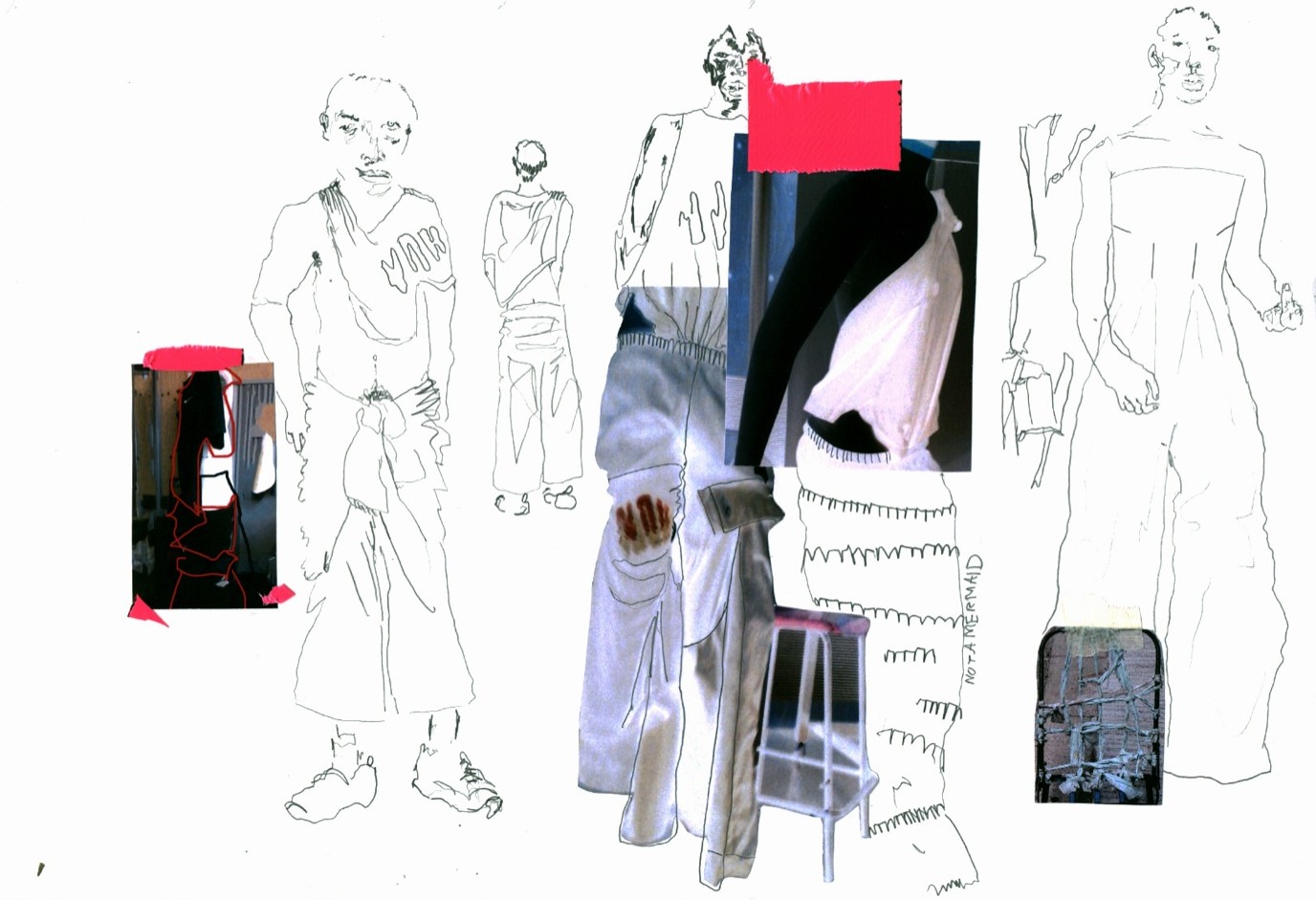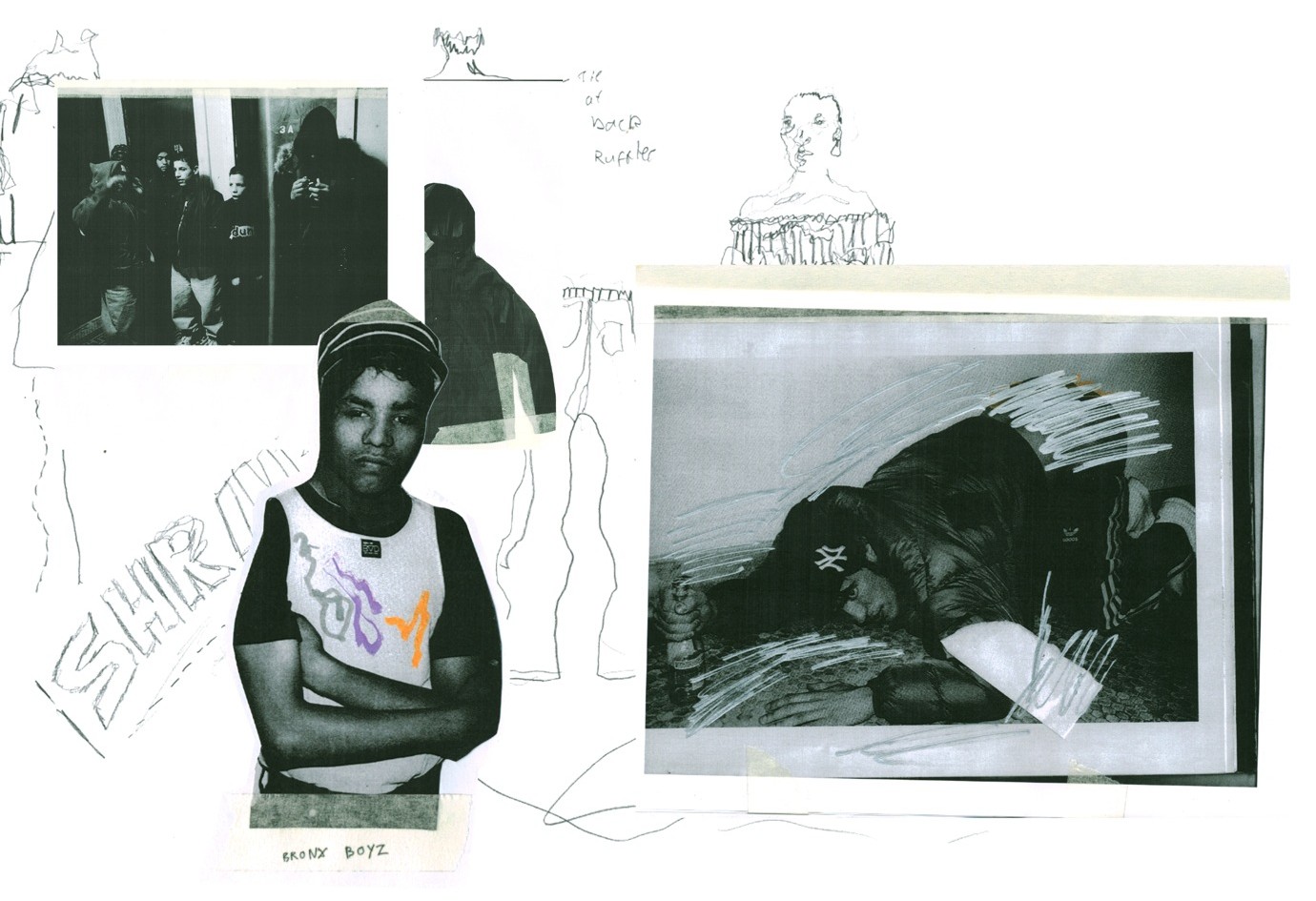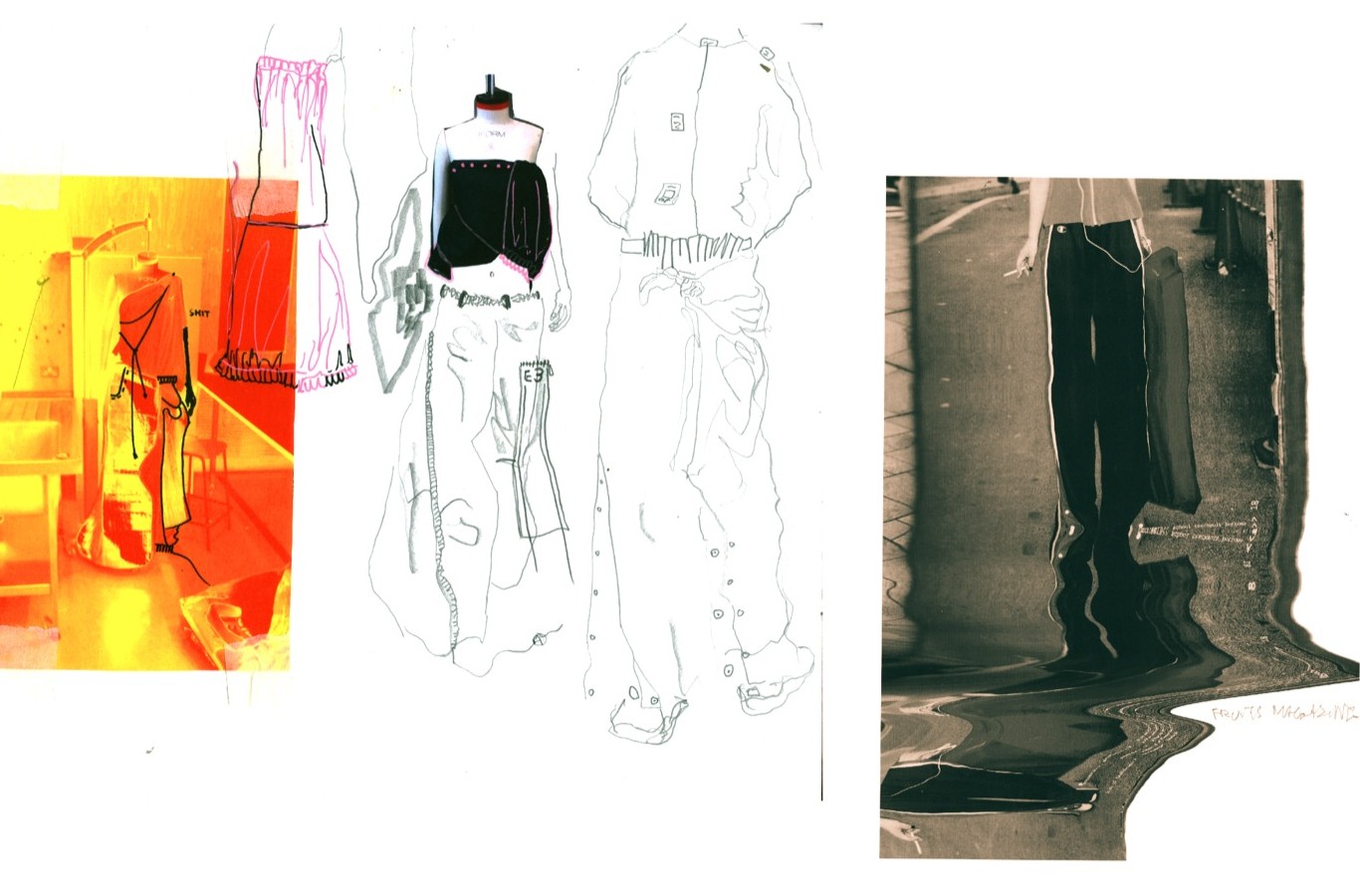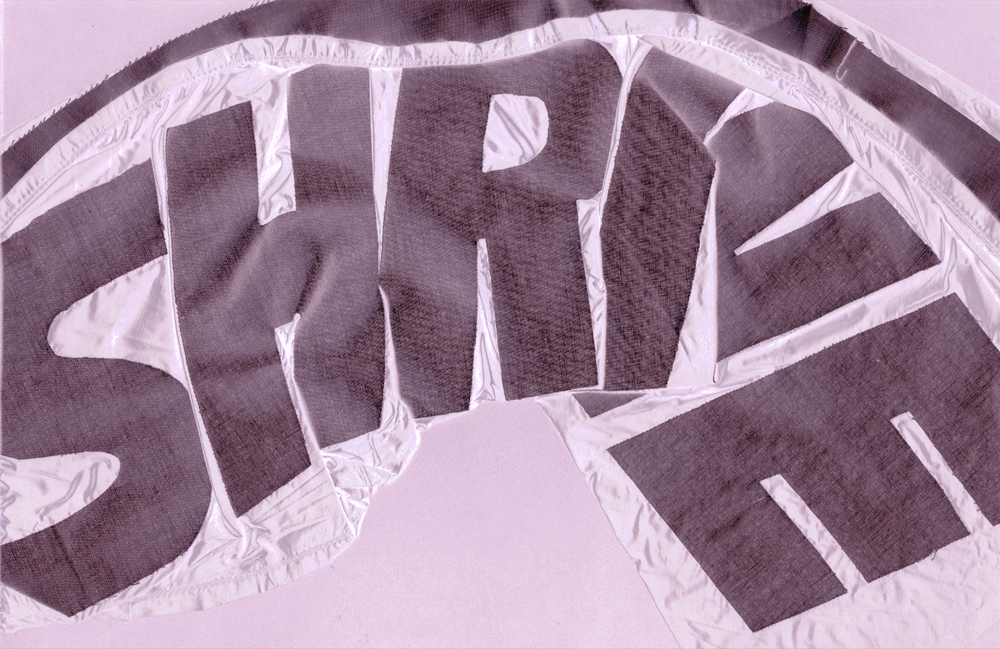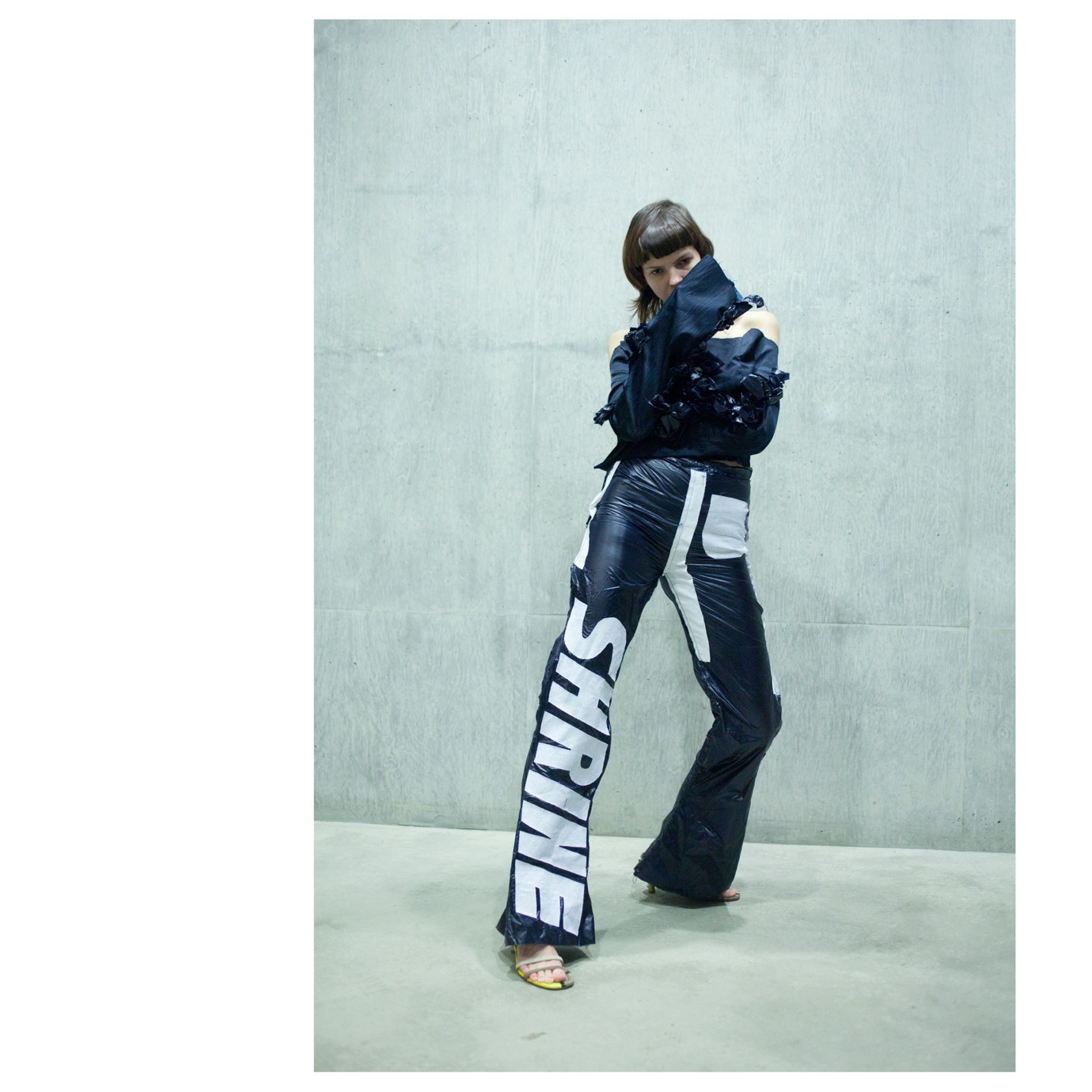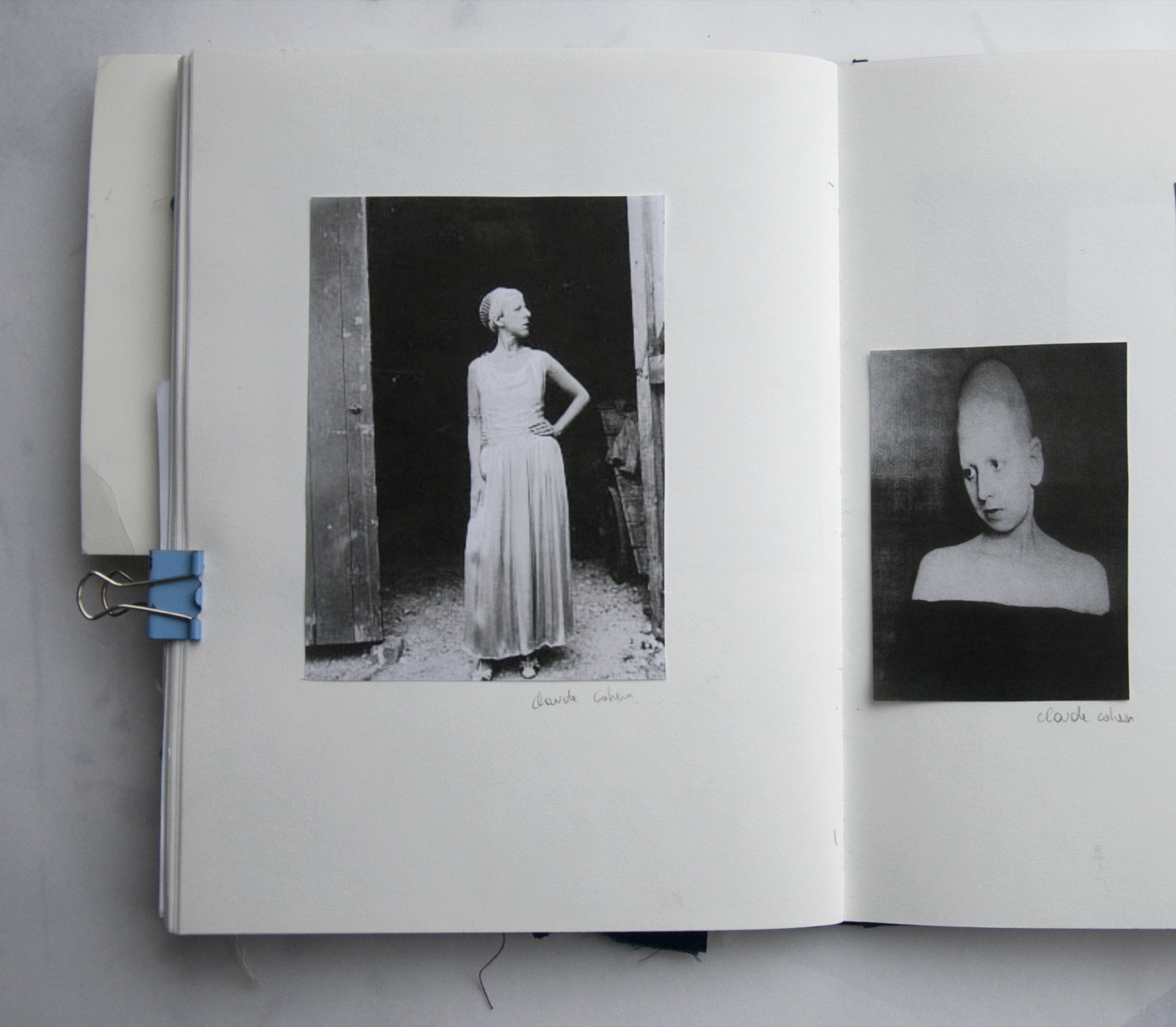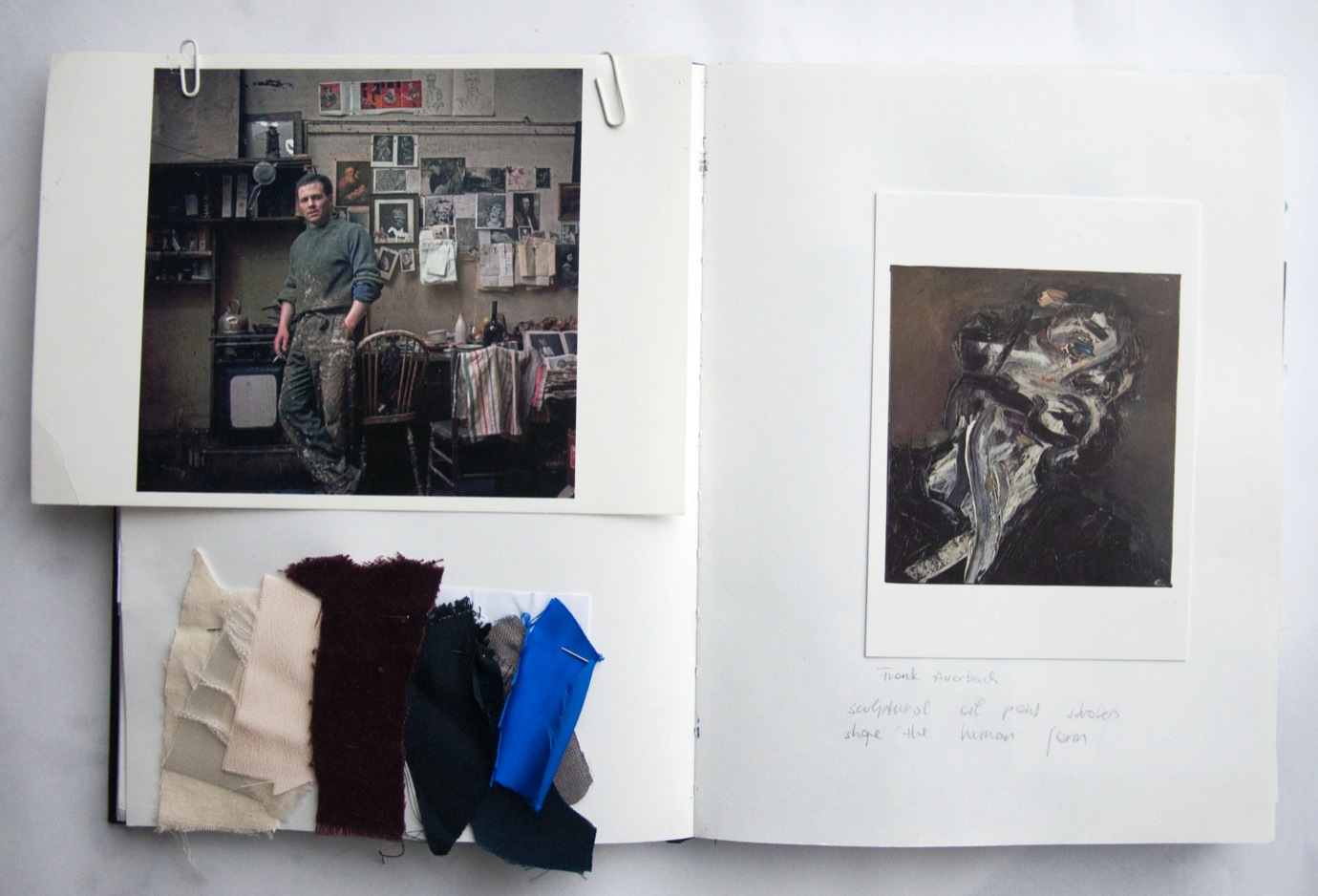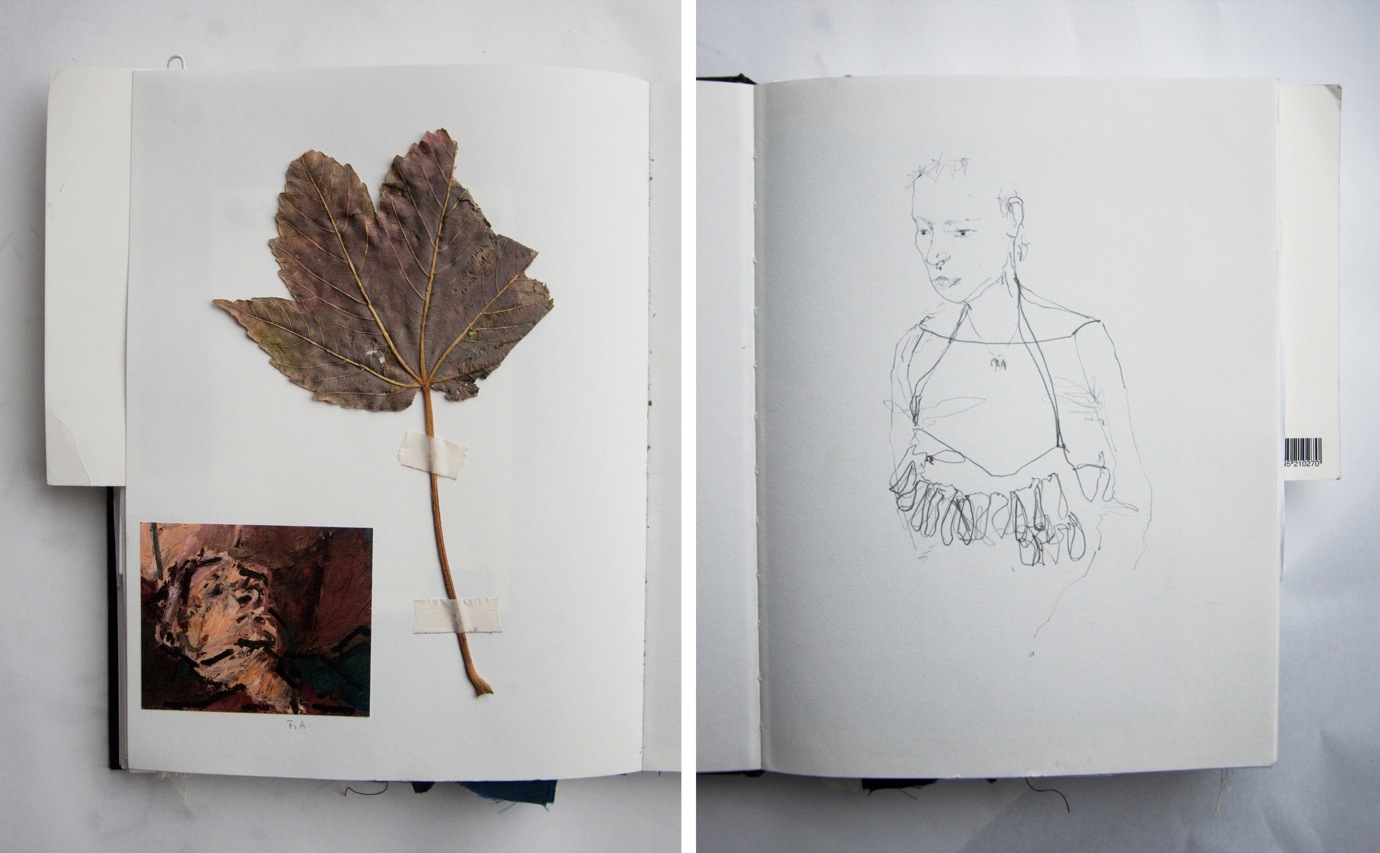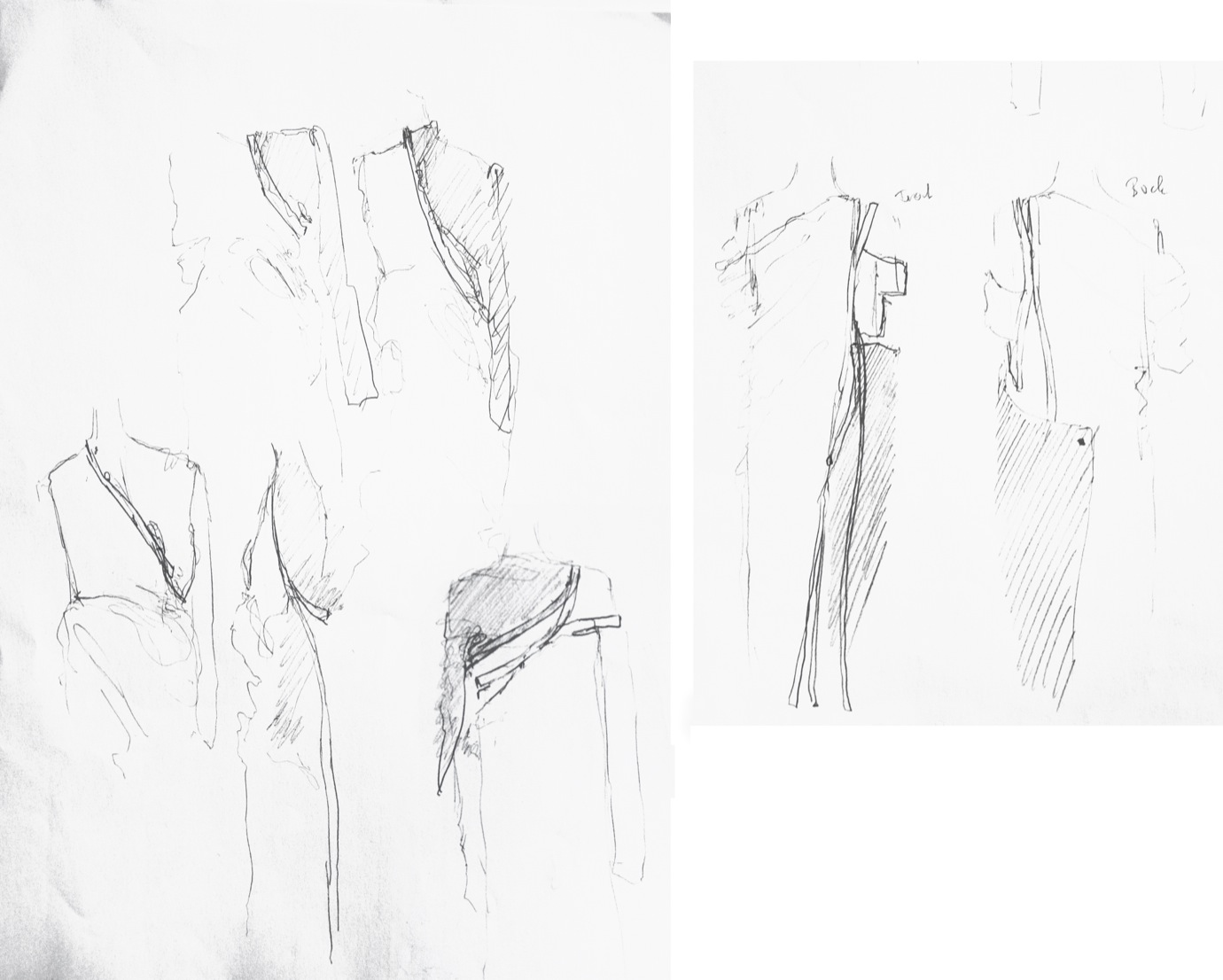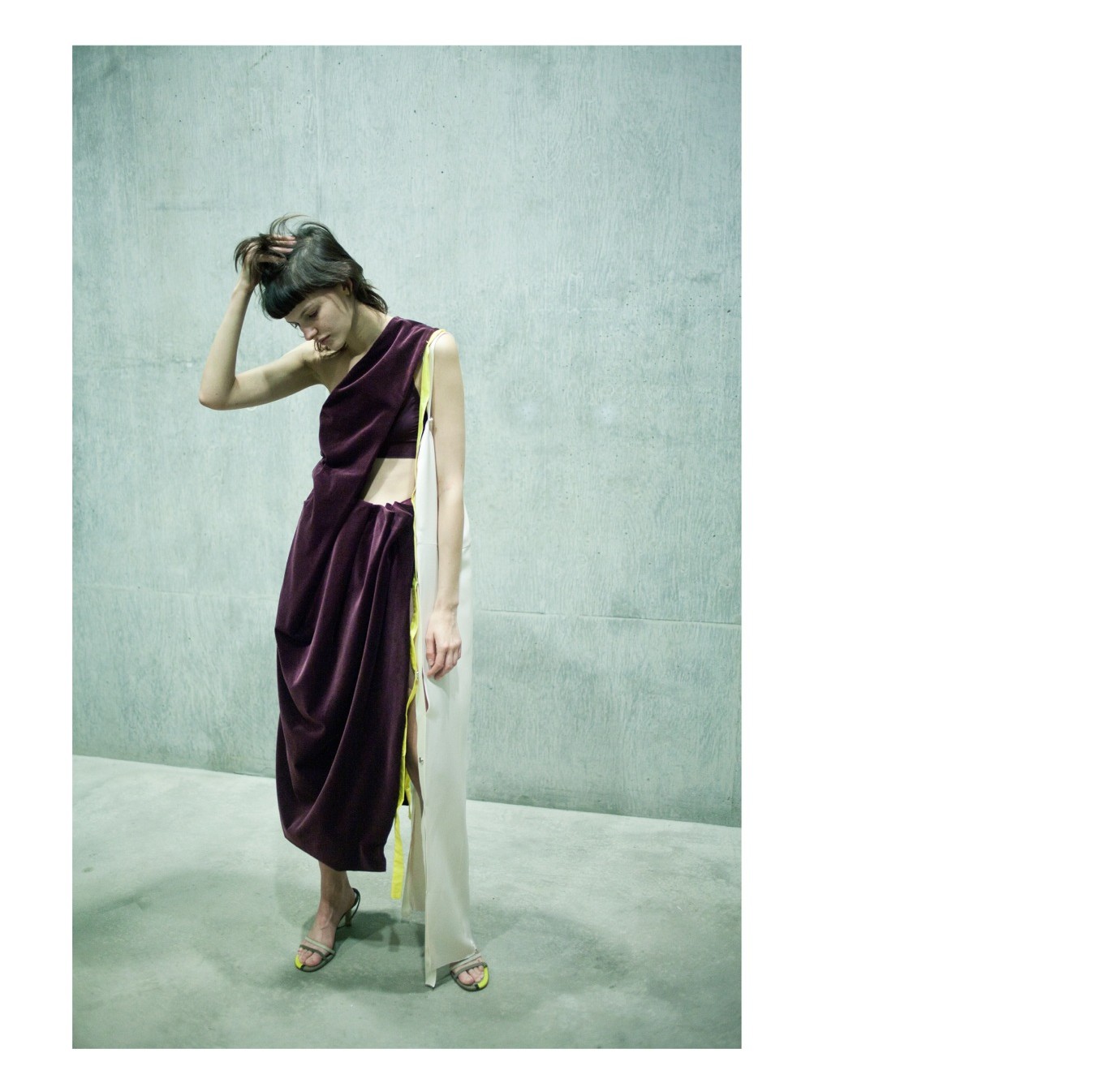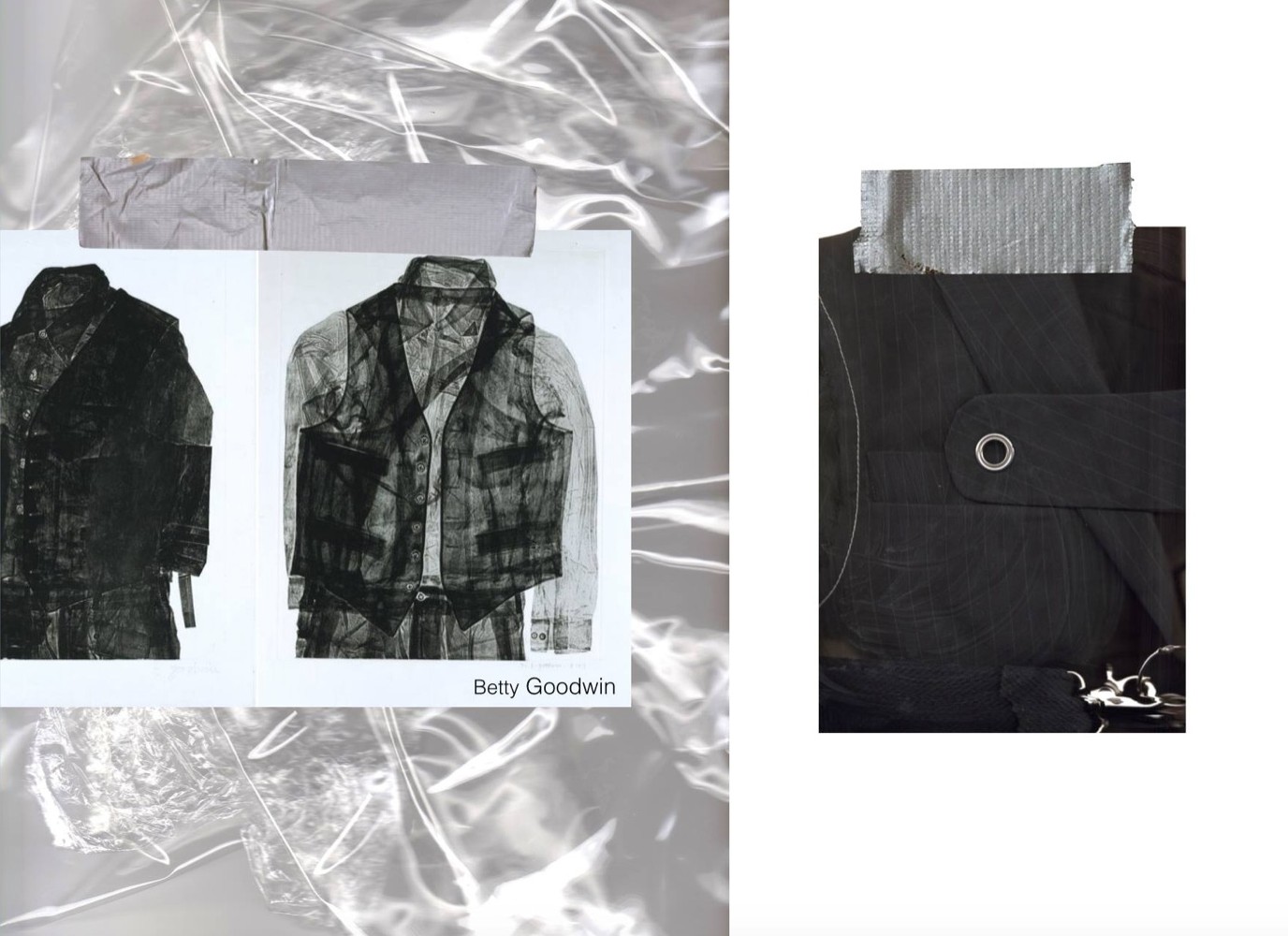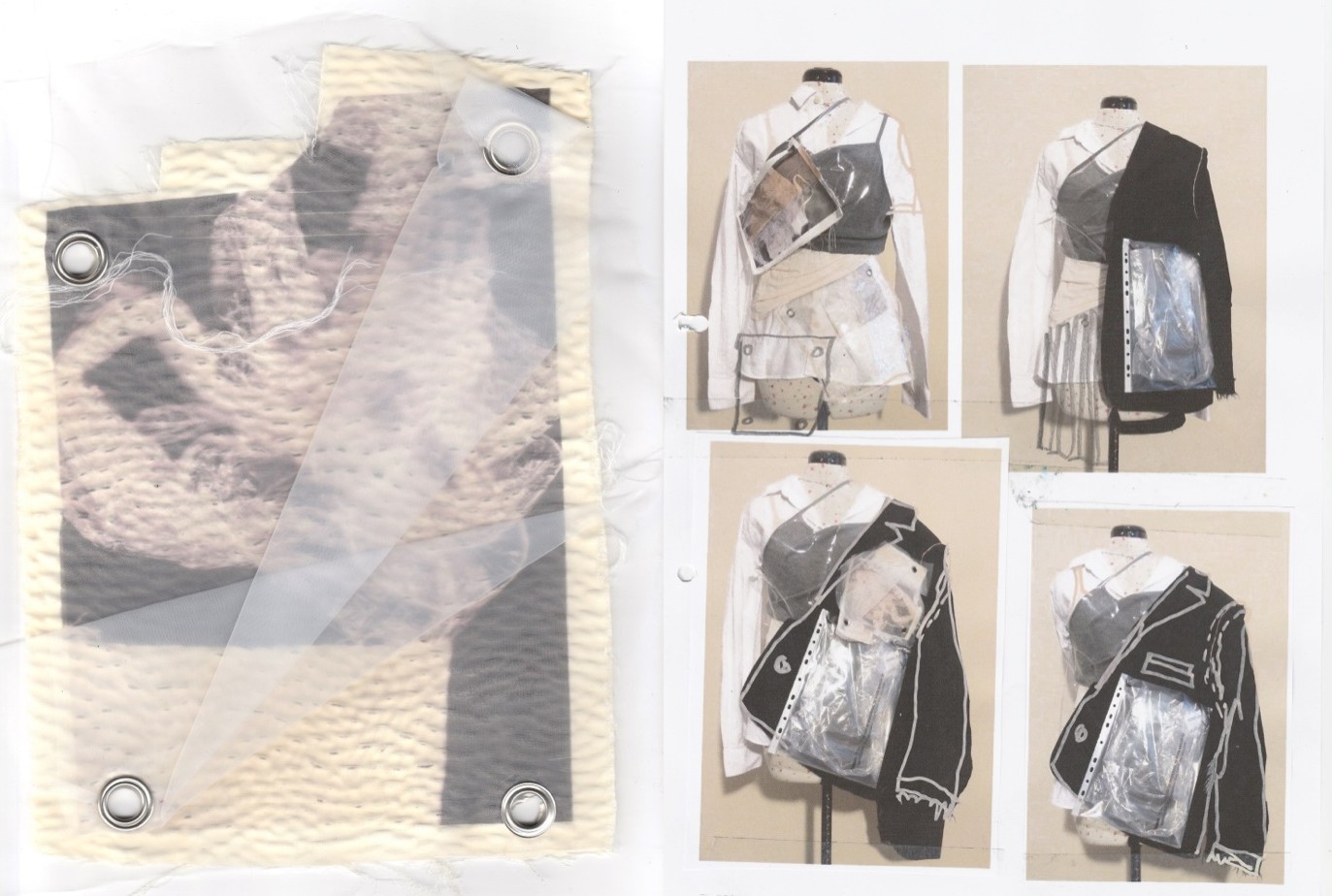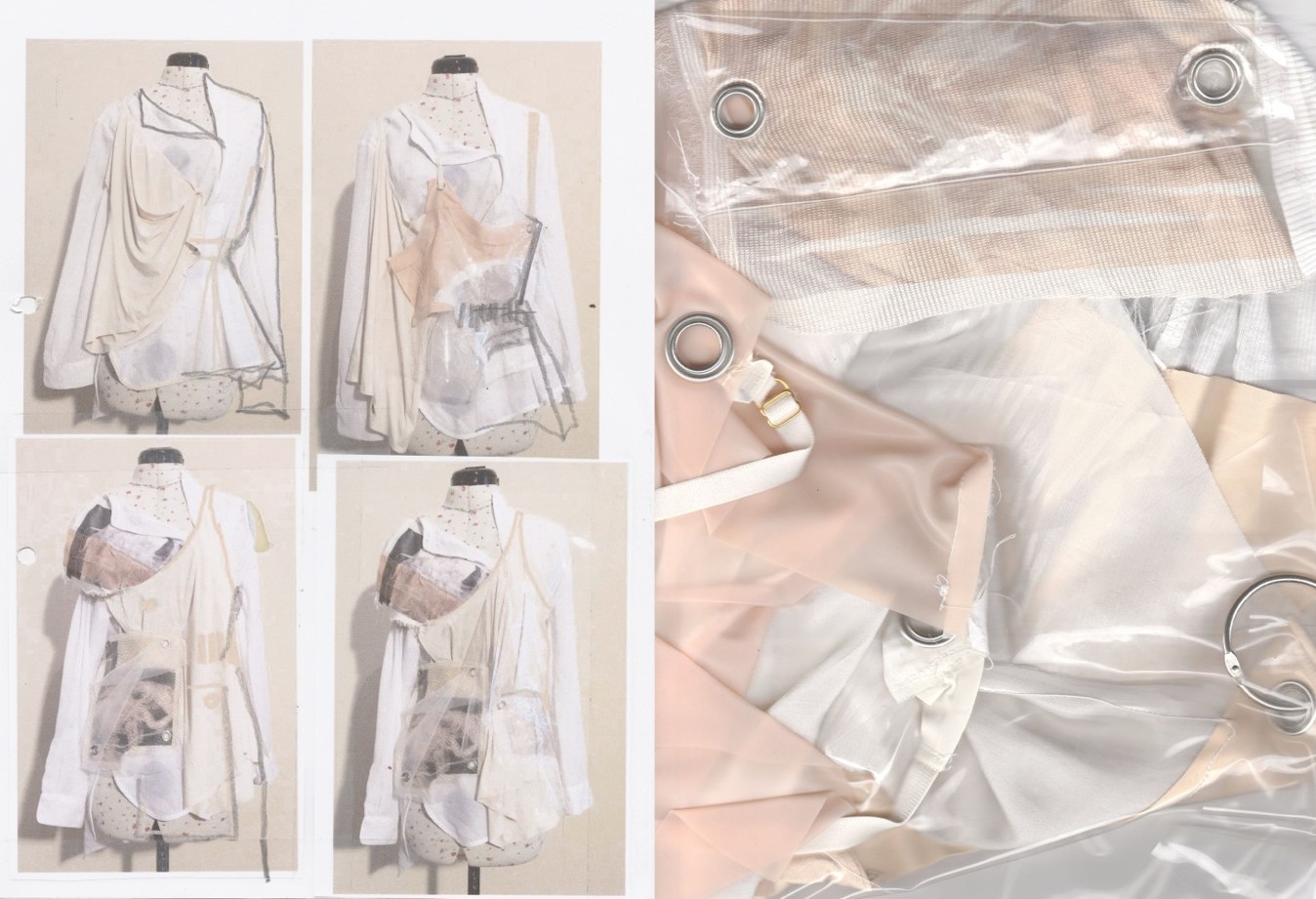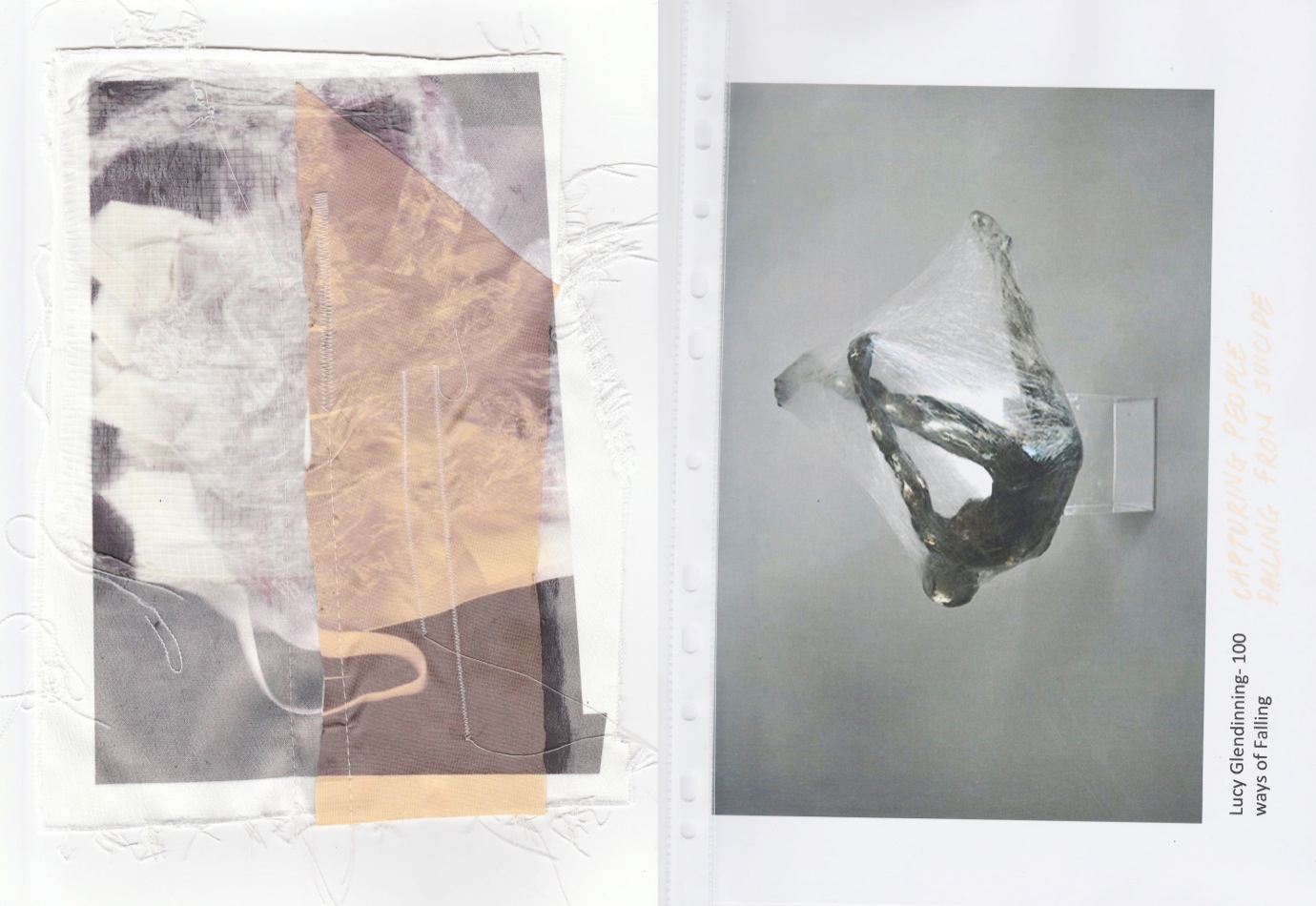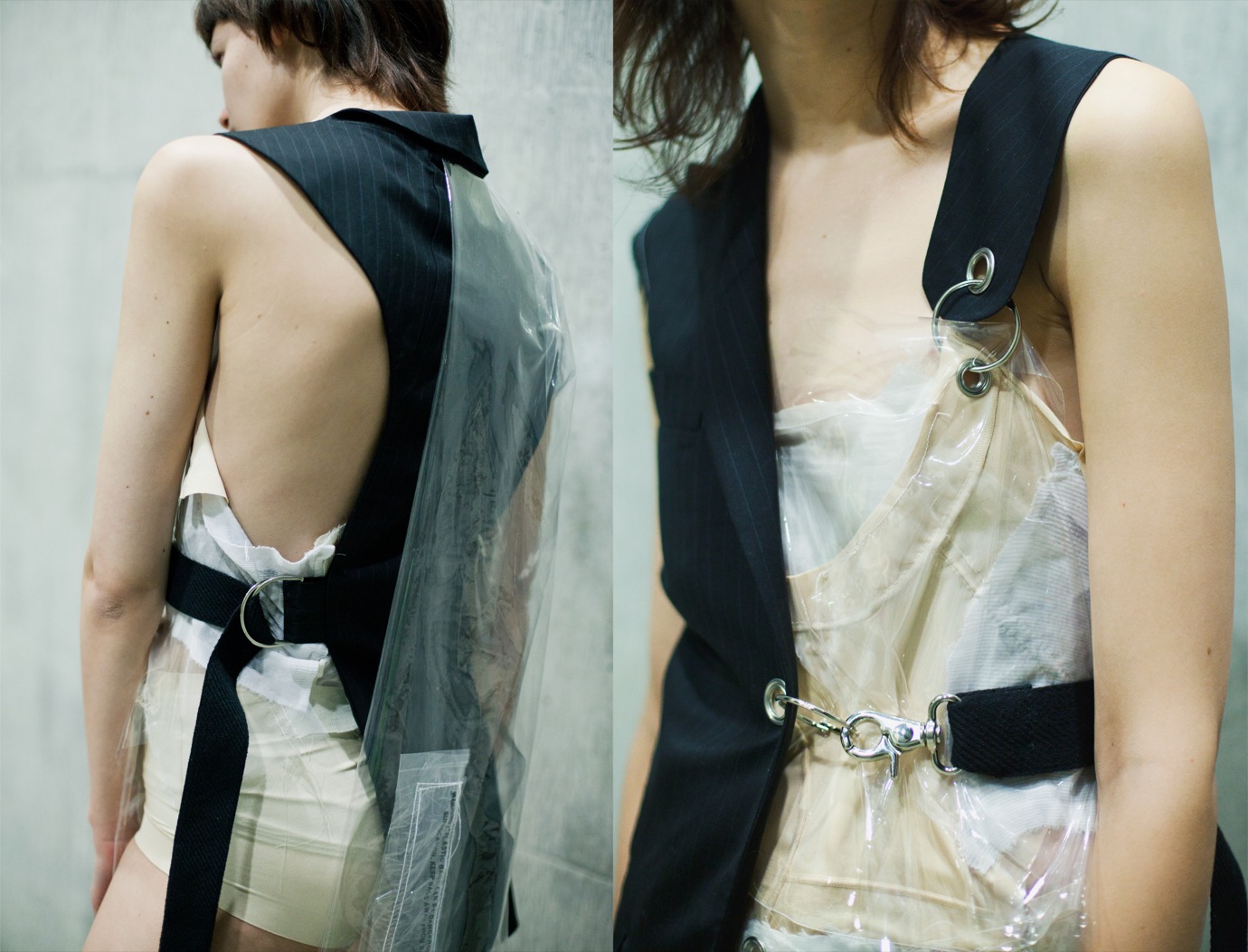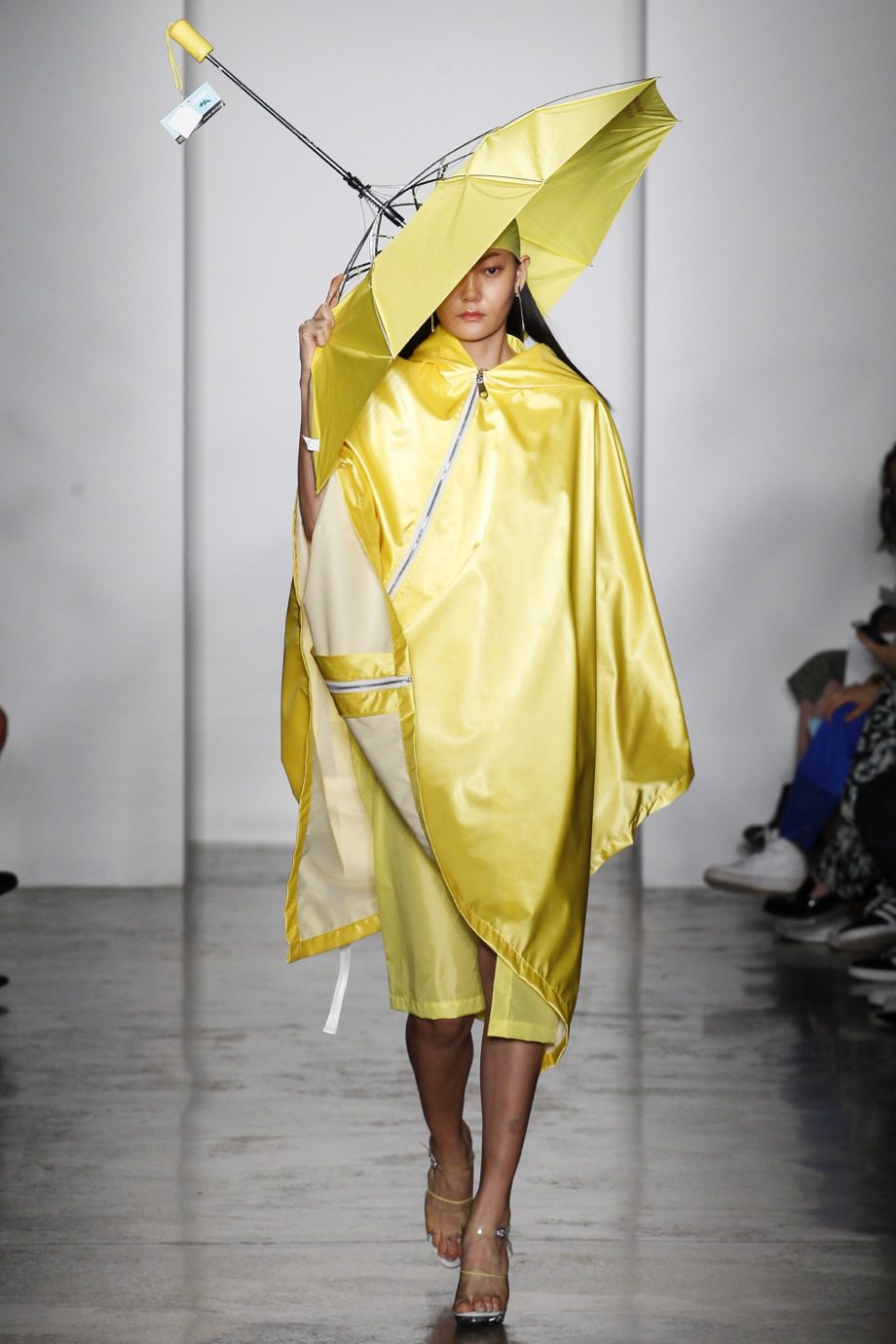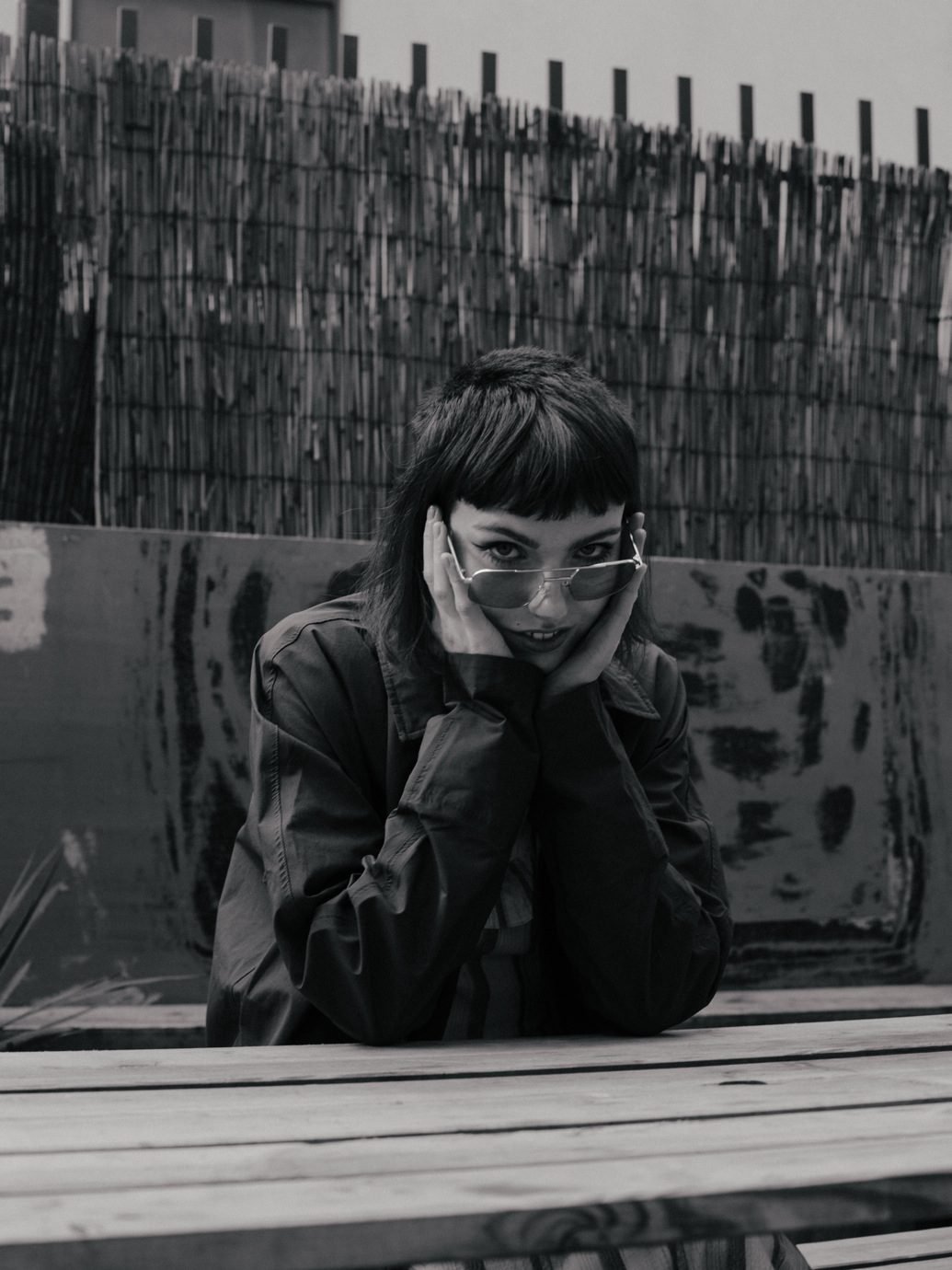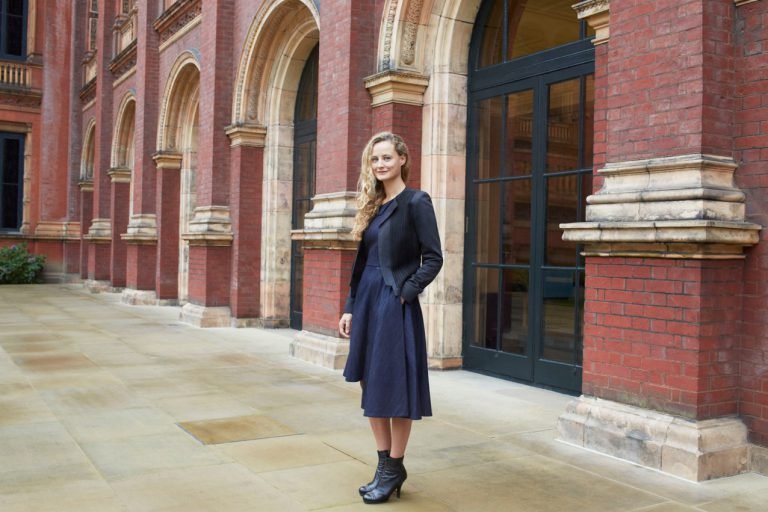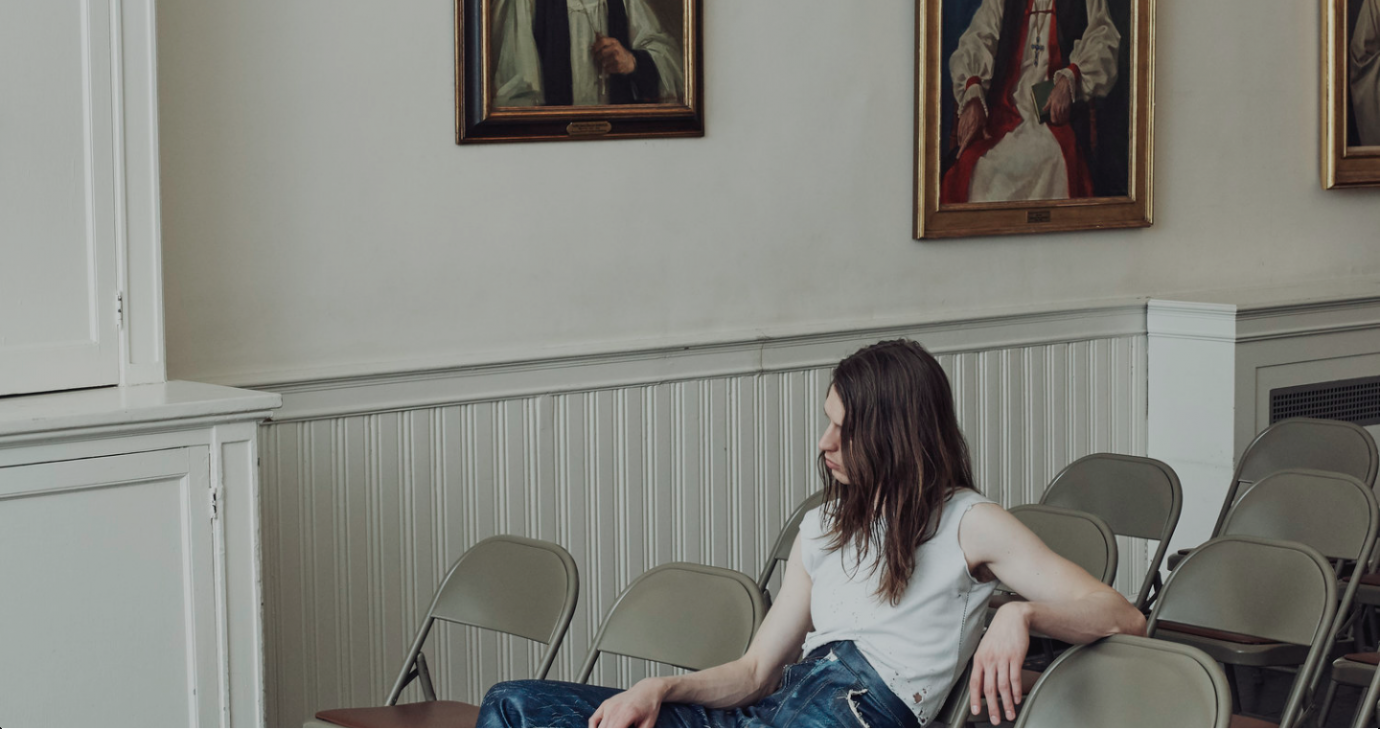Mission: research an entire fashion design project, without the Internet
Research is and will always be a vital part of a designer’s creative development. In this project, the second year Womenswear students were thus to dig further into what actually constitutes a research process. With a vital focus on exploring new and different areas of initial sources, the students were strictly denied any access to the Internet. With two weeks to create and develop a personal concept, they had one week to create one outfit to communicate their visual narrative. Have a look on how four fashion students decided to approach the challenge!
What is your project is about?
We went to visit the Rambert Dance Company’s archive building in Southbank, where I saw this artwork from Goshka Macuga, in which she depicted the dancers in their studio. But because of the technique she used — contrasting black and white pixels to create both the characters and the environment — they actually looked more like dehumanised creatures in some kind of slow, unwilling movement to me. It initiated the project, and looking at this huge picture inside its own environment (behind windows), added to its meaning. They did not only seem like blurry ghostly shapes, but also trapped, imprisoned, crushed, consumed. This gave me the basic story to develop my ideas of devoré fabrics and designs.
Where do you usually begin your research and design process?
I usually start at home. I like being alone, get some peace and quiet, so I can choose a good theme to work on. It can take a few days. I feel a lot more distracted and non-productive when I am surrounded by people, like in the library. I am quite sensitive to noises.
Do you primarily use first or second hand research?
I use both, but generally more first hand research. I feel that I can have a more personal perspective, where I ‘possess’ my process. When you really understand your concept, when you ‘own’ it, you can always feel that the work you produce truly respects and represents who you are and what you wanted to express. That’s something I manage to achieve more easily from a first hand source. Second hand research allows me to expand the quantity of visual sources I can use and have a more global vision; to integrate new details, or to sometimes rectify something wrong or incomplete.
Do you have any particular theme that recurs in your work?
I never really work with the same theme, since I’m not sure I could rework one and be totally fresh about it to have new and interesting visions. I’m just scared that I would make the same decisions again and again, so I prefer to work with something new. But it’s also because I get bored quite quickly, so I kind of need a new interest. However, all my projects are linked in a more global, deeper thought. I’ve worked a lot with the idea of destruction, suffering, rage and what makes you feel alive. Sometimes it is easy to identify, but it also can be hidden and metaphorical. I also like the idea of performing both through and within the garments. Almost like in theatre or opera, where the costume is a full part of the character. It gives them their identity and describes their mood as much as their attitude. That’s the way I’d like to see the women I dress: like pieces of my play.
So, the library. Tell us what you really think.
The library has many books about many different things, which is a great place to begin your research. Nevertheless, it can be hard to find what you are looking for when it is something really precise. You may need to go on the Internet first to get the basic info, and then look further in the books to deepen your research. The material and product collection is an amazing chance for us to touch fabrics we haven’t seen before and we wouldn’t have thought to use.
In this project, you weren’t allowed to use any visual research from the Internet. On a scale from 1-10, how did that work out for you? (1 being you still getting lost on your way to the CSM library, 10 meaning you can’t remember the word ”computer” ever being part of your vocabulary.)
I would say 8 out of 10. I had the chance to find my idea during the visit to the Rambert Archive, which helped me a lot in this process that restricted us from using Internet material. I found the majority of the visual references I used in books from the library. Yet, I still made some late research on the Internet to complete my theme decipherment and understanding. Internet has become such an important part of our lives, I guess it will take a few more trials before I completely abandon it. It makes the research process so much faster and easier, but the risk is that everyone gets to see the same things and forget to be critical about it. You have to be critical about it, or you’ll get lost in the information flow.
Are you satisfied with the outcome?
I am pretty satisfied, even though it’s not exactly what I was visualising when I started the project. We had several other things to hand in during the week, so basically the four-day project turned into a two-days-and-two-nights job for many people. Because of the short amount of time, I have had to make some compromises. The basic shape of the garments is what I imagined, but I wanted to make some metal cuttings and couldn’t find any company in London that was able to do it in time. I ended the making of the garment in the last minutes. I was struggling to place my surface decorations nicely (almost the most important part), and I’ve had to remove some fabric experimentations I made, which took me a long time, because I wasn’t able to find the right balance. But when I saw the model wearing my look, I felt pretty satisfied and relieved it worked that well.
Firpal Jawanda
What is your project is about?
It’s a personal exploration into gang culture and its links with worship and devotion. I read about South Asian gangs that were creating their own ‘uniforms’, which I think was the starting point for the research.
Where do you usually begin your research and design process?
I usually just pick up books from the library that look interesting and go through them page by page, scanning what I like. With this project, the first few pages of my research were mainly focused on colour; there were no big ideas at the beginning. I just had to get going and not worry about having a perfect initial narrative.
How do you look at the challenge of transforming 2D work into 3D?
It can be intimidating and upsetting when you fail at it. But if you push through that and stay motivated, you’ll have a better chance of learning more and creating something you think is valid and interesting, even if it is just one aspect of a final garment.
Do you have any particular theme that recurs in your work?
My identity. The links that I’ve made in this project come from my personal experiences, somehow. Gangs are big part of Wolverhampton, where I grew up. I would see these South Asian boys pray on Sundays at the temple and cause shit during the week days. It was interesting to watch these dual identities that these boys were juggling, while I was juggling my own, you know?
Are you satisfied with the outcome?
Considering the fact that this was an outcome of a ‘one week project’ — when we had two other deadlines, that essentially left us with 3-4 days to make a whole look plus toiles — I guess I should be happy with it. But it’s such a rushed project that it’s hard to be proud of anything you can make in that amount of time. There is so much I would change or scrap altogether; my research was so much richer than the final thing. But the nature of having 3 and a half days to make your garment is pretty rough. You don’t have the time to make mistakes, you don’t sleep and you fuck up.
René Scheibenbauer
What is your project is about?
I was interested in how identities are shaped. I see a personal identity as a state of mind, or time that is unfixed and constantly changes. I observed how people’s identities are manifested in the way they create their private spaces: what they choose to surround themselves with, and how these things are connected to their history, present or future.
Do you have any particular theme that recurs in your work?
The themes and ideas I work with differ mostly between being reflective about my observations, and exploring things I’m curious about. There are definitely themes that keep re-appearing, and that go on to evolve from a different angle in further work.
How do you look at the challenge of transforming 2D work into 3D?
Sometimes I manage to translate 2D work into 3D work naturally, as my ideas mostly come three-dimensionally. It’s very interesting to experiment with varieties of fabrics in 3D, and discover how these materials drape, move and react to manipulation.
Do you primarily use first or second hand research?
My research varies between observative photographs I take, and also include direct sketches. In my work, I try to respond to direct experiences, whether these are emotional, visual, physical or any other form. Books or online sources inform these additionally.
Do you think CSM students are given enough tools to explore a broader area of research methods?
There are definitely several tools to explore different research methods. However, there is not a lot of time to let experiences appear naturally, which can then be explored further in depth. Instead, you rather have to stick to the first thing you see that you consider for your project. There is mostly not enough time to dig into your initial idea, research, or design development more in-depth. There’s not enough time to make mistakes, or have unexpected events that are crucial to push your work into unknown territory.
What do you really think about the library?
The poetry section is a forgotten dusty spot! There is definitely a lot to catch up on!
Are you satisfied with the outcome?
I consider the outcome of this project to be only one starting point.
Vy Cutting
What is your project about?
Basically, I received an all-in-one printer from student finance for my dyslexia, and I just went crazy, scanning random pieces of plastic and existing garments. I became fascinated by the creases, folds and textures of these 3D objects translated in a 2D scan. One of the objects I found was a plastic bag with a label that says “WARNING: plastic bags can be dangerous. To avoid danger of suffocation, keep bags away from babies and children.” This reminded me of Lucy Glendinning’s works, ‘100 ways of falling’, which captured people that were falling down (committing suicide) from plastic factories in China. I then started looking at other artists, such as Karla Black, who played with fragility and draping of plastic. An artist I then explored, was Betty Goodwin, who was attracted by the materiality of found jackets. She used ’soft ground techniques’ to create etchings, which gives her jackets an X-ray effect. I started experimenting with printing my scans onto little samples of fabric, which became a big element in my project. (But please don’t try forcing fabrics through your printer if you have a fancy inkjet one).
Where do you usually begin your research and design process?
It depends on the project, though the best place to get inspired is Deptford Market.
How do you look at the challenge of transforming 2D work into 3D?
I get most of my 2D works from draping with existing garments. As I hardly have any pattern cutting experience, sometimes what I am trying to achieve is slightly unrealistic. Thank God for pattern cutting tutors! Big shout out to Sharon for getting me through this project.
Do you have any particular theme that recurs in your work?
Last year, I was the ‘Queen of big shapes’ and explored abstract silhouettes. But recently, I am focusing a lot more on fitted, tailored garments. My transition means that I am still trying to ‘find myself’, I guess.
What are your true thoughts about the library?
I still have problems finding my way around, to be honest. At the start of every project, I really like to just randomly pick out an armful of books and spend my day flicking through them. I think it’s hard to use the library unless you’re looking for a specific author, artist, designer or genre.
Are you satisfied with the outcome?
I am quite satisfied with my outcome, but I wish I had more time to make some plastic trousers for this look. I feel that my ‘plastic idea’ could have been pushed further.

